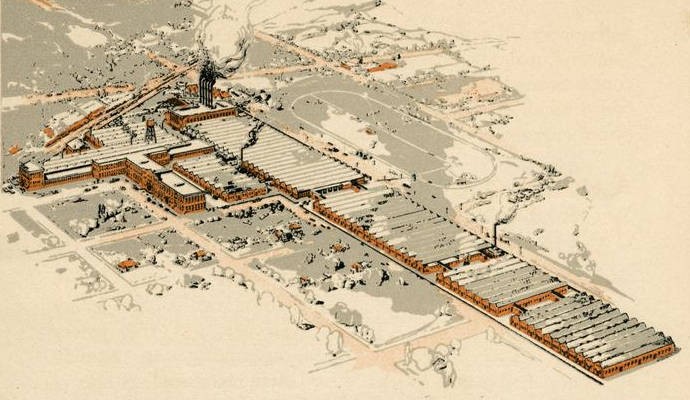|
Ajax Motors Co.
Ajax Motors Co. was an automobile company based in Seattle, Washington, started by George, Frank, and Charles Parker. The company produced a two-seat car. It was available in three wheelbase lengths. Right-hand and left-hand steering were offered. It had a 6-cylinder engine that was available in either sleeve valve or poppet valve form, and could be changed "from one to the other at comparatively little expense." See also * Brass Era car The Brass Era is an American term for the early period of automotive manufacturing, named for the prominent brass fittings used during this time for such features as lights and radiators. It is generally considered to encompass 1896 through 19 ... References * Defunct motor vehicle manufacturers of the United States Defunct companies based in Seattle Defunct manufacturing companies based in Washington (state) Brass Era vehicles {{US-company-stub ... [...More Info...] [...Related Items...] OR: [Wikipedia] [Google] [Baidu] |
Seattle, Washington
Seattle ( ) is the List of municipalities in Washington, most populous city in the U.S. state of Washington (state), Washington and in the Pacific Northwest region of North America. With a population of 780,995 in 2024, it is the List of United States cities by population, 18th-most populous city in the United States. The city is the county seat of King County, Washington, King County, the List of counties in Washington, most populous county in Washington. The Seattle metropolitan area's population is 4.02 million, making it the List of metropolitan statistical areas, 15th-most populous in the United States. Its growth rate of 21.1% between 2010 and 2020 made it one of the country's fastest-growing large cities. Seattle is situated on an isthmus between Puget Sound, an inlet of the Pacific Ocean, and Lake Washington. It is the northernmost major city in the United States, located about south of the Canada–United States border, Canadian border. A gateway for trade with East ... [...More Info...] [...Related Items...] OR: [Wikipedia] [Google] [Baidu] |
Automotive Industry
The automotive industry comprises a wide range of company, companies and organizations involved in the design, Business development, development, manufacturing, marketing, selling, Maintenance, repairing, and Custom car, modification of motor vehicles. It is one of the world's largest industry (economics), industries by revenue (from 16% such as in France up to 40% in countries such as Slovakia). The word ''automotive'' comes from the Greek language, Greek ''autos'' (self), and Latin ''motivus'' (of motion), referring to any form of self-powered vehicle. This term, as proposed by Elmer Ambrose Sperry, Elmer Sperry (1860–1930), first came into use to describe automobiles in 1898. History The automotive industry began in the 1860s with hundreds of manufacturers pioneering the Brass Era car, horseless carriage. Early car manufacturing involved manual assembly by a human worker. The process evolved from engineers working on a stationary car to a conveyor belt system where the ... [...More Info...] [...Related Items...] OR: [Wikipedia] [Google] [Baidu] |
Wheelbase
In both road and rail vehicles, the wheelbase is the horizontal distance between the centers of the front and rear wheels. For road vehicles with more than two axles (e.g. some trucks), the wheelbase is the distance between the steering (front) axle and the centerpoint of the driving axle group. In the case of a tri-axle truck, the wheelbase would be the distance between the steering axle and a point midway between the two rear axles. Vehicles The wheelbase of a vehicle equals the distance between its front and rear wheels. At equilibrium, the total torque of the forces acting on a vehicle is zero. Therefore, the wheelbase is related to the force on each pair of tires by the following formula: :F_f = mg :F_r = mg where F_f is the force on the front tires, F_r is the force on the rear tires, L is the wheelbase, d_r is the distance from the center of mass (CM) to the rear wheels, d_f is the distance from the center of mass to the front wheels (d_f + d_r = L), m is the mass ... [...More Info...] [...Related Items...] OR: [Wikipedia] [Google] [Baidu] |
Cylinder (engine)
In an engine, the cylinder is the space in which a piston travels. The inner surface of the cylinder is formed from either a thin metallic liner (also called "sleeve") or a surface coating applied to the engine block. A piston is seated inside each cylinder by several metal piston rings, which also provide seals for compression and the lubricating oil. The piston rings do not actually touch the cylinder walls, instead they ride on a thin layer of lubricating oil. Steam engines The cylinder in a steam engine is made pressure-tight with end covers and a piston; a valve distributes the steam to the ends of the cylinder. Cylinders were cast in cast iron and later in steel. The cylinder casting can include other features such as valve ports and mounting feet. Internal combustion engines The cylinder is the space through which the piston travels, propelled by the energy generated from the combustion of the air/fuel mixture in the combustion chamber. In an air-cooled e ... [...More Info...] [...Related Items...] OR: [Wikipedia] [Google] [Baidu] |
Sleeve Valve
The sleeve valve is a type of valve mechanism for piston engines, distinct from the usual poppet valve. Sleeve valve engines saw use in a number of pre–World War II luxury cars and in the United States in the Willys-Knight car and light truck. They subsequently fell from use due to advances in poppet-valve technology, including sodium cooling, and the Knight system double sleeve engine's tendency to burn a lot of lubricating oil or to seize due to lack of it. The Scottish Argyll company used its own, much simpler and more efficient, single sleeve system (Burt-McCollum) in its cars, a system which, after extensive development, saw substantial use in British aircraft engines of the 1940s, such as the Napier Sabre, Bristol Hercules, Centaurus, and the promising but never mass-produced Rolls-Royce Crecy, only to be supplanted by the jet engines. Description A sleeve valve takes the form of one (or in the case of double sleeve valves, two) machined cylinders which fit concentric ... [...More Info...] [...Related Items...] OR: [Wikipedia] [Google] [Baidu] |
Poppet Valve
A poppet valve (also sometimes called mushroom valve) is a valve typically used to control the timing and quantity of petrol (gas) or vapour flow into or out of an engine, but with many other applications. It consists of a hole or open-ended chamber, usually round or oval in cross-section, and a plug, usually a disk shape on the end of a shaft known as a valve stem. The working end of this plug, the valve face, is typically ground at a 45° bevel to seal against a corresponding valve seat ground into the rim of the chamber being sealed. The shaft travels through a valve guide to maintain its alignment. A pressure differential on either side of the valve can assist or impair its performance. In exhaust applications higher pressure against the valve helps to seal it, and in intake applications lower pressure helps open it. Etymology The word poppet shares etymology with "puppet": it is from the Middle English ''popet'' ("youth" or "doll"), from Middle French ''poupette'', whic ... [...More Info...] [...Related Items...] OR: [Wikipedia] [Google] [Baidu] |
Brass Era Car
The Brass Era is an American term for the early period of automotive manufacturing, named for the prominent brass fittings used during this time for such features as lights and radiators. It is generally considered to encompass 1896 through 1915, a time when cars were often referred to as horseless carriages. Elsewhere in the world, this period would be considered by antique car enthusiasts to consist of the veteran (pre-1904), and Edwardian eras, although these terms are really not meaningful outside the former British Empire. Overview Early automakers turned to brass for their vehicles for both its looks and function. It held up well against tarnishing and bad weather, but required regular polishing to maintain its appearance. Though the automobile was invented a few years before the start of the Brass Era, the 20 years that make up this era represent the beginning of the automotive industry. It was a period of small-scale manufacturing, experimental designs, and alternat ... [...More Info...] [...Related Items...] OR: [Wikipedia] [Google] [Baidu] |
Defunct Motor Vehicle Manufacturers Of The United States
{{Disambiguation ...
Defunct may refer to: * ''Defunct'' (video game), 2014 * Zombie process or defunct process, in Unix-like operating systems See also * * :Former entities * End-of-life product * Obsolescence Obsolescence is the process of becoming antiquated, out of date, old-fashioned, no longer in general use, or no longer useful, or the condition of being in such a state. When used in a biological sense, it means imperfect or rudimentary when comp ... [...More Info...] [...Related Items...] OR: [Wikipedia] [Google] [Baidu] |




